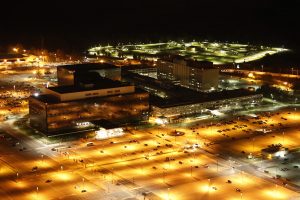Canada hosted the latest round of the Five Eyes defense ministers’ meeting virtually on October 15-16. The Five Eyes grouping was originally conceived for joint signals intelligence efforts between five English speaking countries – Australia, Canada, New Zealand, the United Kingdom, and the United States — in the early Cold War years. But over the 70-plus years since it was first conceived, its role has significantly evolved.
In the recent past, Five Eyes consultations have addressed a variety of issues. Ministers responsible for internal security affairs have met through the Five Eyes ministerial arrangement regularly since 2013, with recent discussions in that forum focusing on emerging cybersecurity threats. Since this year, ministerial meetings involving defense, foreign affairs, and treasury ministries between the five countries have been publicly labeled as Five Eyes meetings.
Earlier this year, in June, Five Eyes defense ministers had met, once again through video conferencing, with a wide agenda on the table. As with many security arrangements, the new Five Eyes thrust also has China and the Indo-Pacific firmly in focus.
A U.S. press release of the latest Five Eyes defense minsters’ meeting noted they “discussed current and future international initiatives and considered how the Five Eyes might increase cooperation to address shared global security challenges.” It added that the ministers also shared “their respective engagement strategies in the Indo-Pacific region and identified ways to better coordinate efforts.”
The Trump administration has pushed forward an incipient networked security architecture for the Indo-Pacific where members in multiple – often overlapping – groupings seek to coordinate their positions on issues of regional importance as well as work with others outside them. (The U.S. and Australia are common to both the Quad and Five Eyes, for example.) The Five Eyes is not an exception; the joint statement from the June defense ministers’ meeting makes this clear, noting the importance of “regional partners and institutions.”
But for a grouping that remains shrouded in secrecy when it comes to the extent of their joint intelligence efforts, this makes for curious optics. In fact, some analysts have questioned the wisdom of an intelligence grouping assuming policy coordination roles. Writing in the Lowy Interpreter in June, Ben Scott, a former Australian government official, noted that “characterizing policy summits as Five Eyes gatherings also risks blurring the policy-intelligence distinction,” going on to add that such blurring could also potentially compromise the objectivity needed for good intelligence efforts.
Beyond this, as Scott also noted, the Five Eyes brand creates barriers to the introduction of new members. Simply put, it is easier to add an additional country, say Japan, to Australia-Canada-New Zealand-U.K.-U.S. strategic consultations, even if they are intelligence-driven, than it is to make a new country part of the Five Eyes. In fact, in August this year Japan’s then-Defense Minister Kono Taro made a pitch to join the Five Eyes arrangement as the “Sixth Eye.” But, as The Diplomat’s Ankit Panda wrote at the time, significant barriers to Japan’s entry to that grouping – primarily in form of information control measures on Tokyo’s part – remain even though it is already very close to that arrangement.
Finally, there’s the issue of overloading agendas. While the Five Eyes arrangement provides a natural opening for a country like Canada to play a larger role in the Indo-Pacific, there is a real risk that by diluting an intelligence-sharing and joint collection mechanism into something with an expansive agenda, the core missions of the grouping could be sidelined. Issues-based coalitions work much better than all-purpose ones.

































